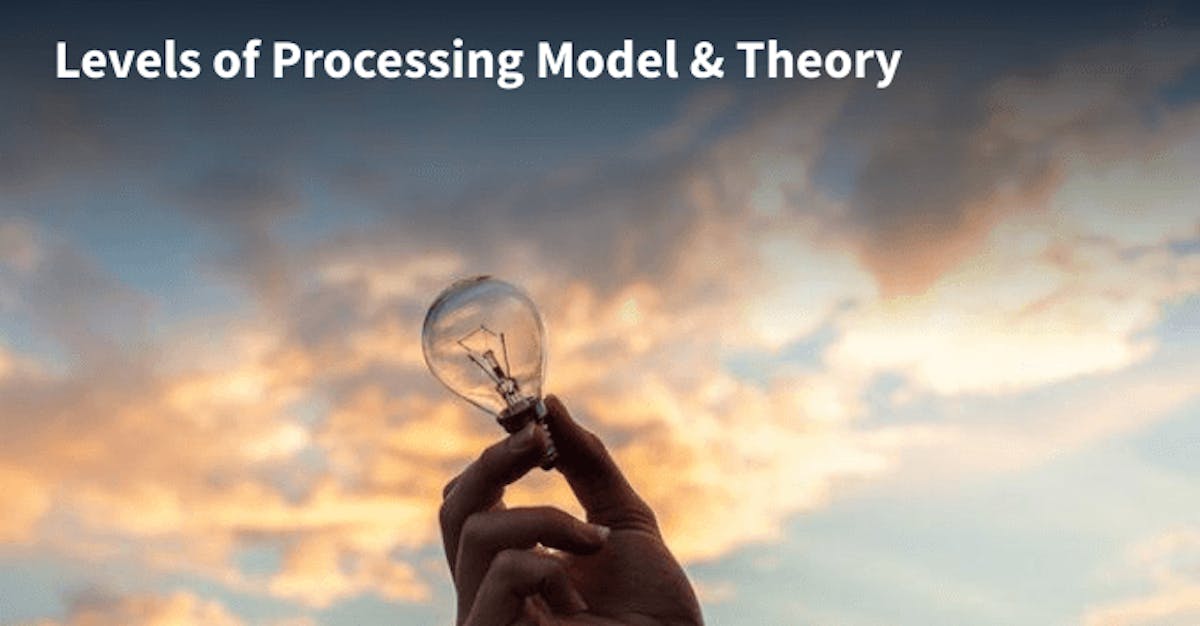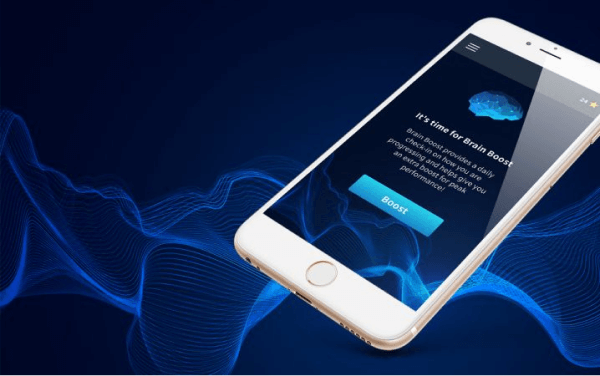Levels of Processing Model & Theory

It’s easy to get sucked into the overwork culture and assume that long hours will automatically equate to better results; however, cognitive neuroscience suggests otherwise. For all those well-intentioned workaholics out there (speaking as a recovering perfectionist myself), I’m sorry to report that no amount of discipline or ‘motivation,’ either on the part of the educator or learner, will make our brain more receptive to encoding information or sensory stimuli into our long-term memories; to internalize content, we need to be strategic about the way we learn.
By tapping into what we understand as the ‘levels of processing model,’ we put the age-old adage of working smarter, not harder, into practice. By developing an awareness of how our brains encode information and implementing a few simple learning hacks, memory performance is significantly boosted, and training time is cut. In this article, let's look into the levels of processing theory and see how it works.
What are the Levels of Processing Model?
What is the main idea of levels of processing theory? We start by asking what does it mean to process or encode information. It is the stage of learning that occurs in between the initial teaching and remembering where memories are filed away by modifying connections between neurons. Essentially, it is where the magic happens. The key to this process is modification. By processing information, learners undertake a creative activity by transforming or manipulating the original content to fit within their unique mental schemas.
However, content depth and the level of processing required varies. Fergus Craik and Robert Lockhart’s landmark study (1972) on information processing identified a continuum of processing across three distinct levels; they found that deeper and more elaborate processing necessitated longer-lasting retention than shallow surface-level processing. So let's learn about shallow vs deep processing in learning.
Shallow learning vs. Deep learning
Shallow processing can either be structural (where the mind recognizes the physical characteristics of information). The appearance of an image or word, or phonemic auditory processing of either music or the pronunciation of a word is shallow processing psychology example. If we fail to connect these surface understandings to broader understandings and use this knowledge in practice, our ever-efficient hippocampus will swiftly throw these seemingly ‘useless’ pieces of information into our mental recycling bins.

Shallow learning may involve:
- Surface-level comprehension
- Rote memorization
- Reinforcement of knowledge through repetition (maintenance rehearsal)
By contrast, deep processing, or semantic processing, refers to a semantic type of processing and meaning-making. Deep processing allows for a certain level of interactivity, and therefore analysis, with the content. Learners can actively engage with the material and attach it to past experiences and prior knowledge through a system of self-referencing. Importantly, learning is inherently asynchronous (i.e., done at the learner’s pace and not under pressure). Deep learning is also authentic and can be easily applied in context. In a nutshell, deep learning, as understood in the levels of processing model, prioritizes depth over breadth. Some instructional designers may find it useful to refer to tools such as Bloom’s Taxonomy, which is a hierarchy of levels of cognitive effort from remembering to creating. Ensuring that there is a healthy proportion of perceptual learning tasks and question types will assist learners in transitioning from shallow to deep processing.
Deep learning may involve:
- Links to prior knowledge
- Real-world examples
- Case studies
- Inquiry opportunities
- Zooming in
- Interactivity
- Self-directed learning
- Peer-to-peer teaching
- Simulations
- Reinforcement of knowledge through meaning-oriented (elaboration) rehearsal (e.g., providing hypothetical scenarios with different decision pathways)
Unsurprisingly, understandings that arise from deep processing are almost always more enduring than shallow processing. Essentially, the levels of processing model illustrate how most ‘recall problems’ are nothing to do with recall at all; rather, they are encoding problems that occur at the time of learning. Psychologist, Debora S. Herold, explains, ‘simply reading over a paragraph of text or listening to a lecture does not guarantee encoding it into memory. What one thinks about while listening or reading is what matters.’ information-processing theorists refer to the process of putting information into memory as
How microlearning taps into the levels of processing model
Although the levels of processing model were developed long before the advent of mobile learning technologies and have continued to evolve over the past forty years, the essence of the learning theory on differentiating types of processing and the neurology of memory-making and stages of memory has had a significant impact on the way corporate and academic education is delivered. Mobile online platforms such as EdApp have adopted a microlearning approach built on cognitive learning theories and cognitive processes such as the levels of processing model to facilitate opportunities for deep processing (AKA meaningful learning). The intersection between deep learning and microlearning is significant. The high learning engagement factor of microlearning, along with active and interactive learning features, social learning, gamification, self-pacing, and continuous support, are much more likely to elicit an emotional response in learners, which the levels of processing model identify as a key trigger for deep encoding and lessen instances of forgetting information. The advent of microlearning technologies and the prioritization of corporate learning and development has served to revitalize cognitive theory on human memory encoding, episodic memory, procedural memory, declarative memory, and mental recall, effectively bringing the levels of processing model into the twenty-first century.

Adaptive learning technologies have broadened our understanding of the levels of processing model. We know that the solution to recall failure is to test and test often. EdApp’s Brain Boost feature is an effective method of tapping into the encoding and retrieval loop by using distributed testing to repeatedly expose learners to short bursts of content at spaced intervals. The repeated retrieval of knowledge from the memory stores over increasingly spaced intervals assists in the encoding. Just as the hippocampus is getting ready to toss a piece of information into the recycling, the act of re-retrieval from short-term memory, even for seemingly surface-level content such as formulas or vocabulary, is a highly effective form of consolidating knowledge into our long-term memory banks (essentially, hacking our way to deep processing).

Similarly, Rapid Refresh, EdApp’s exciting new feature, provides even more options for the bespoke curation of quizzes, without the automation of spaced repetition algorithms. Depending on the learning objective, Rapid Refresh quizzes can be delivered in a single burst or micro-segments that are delivered daily or weekly via push notifications. Not just restricted to online course material, Rapid Refresh is an invaluable blended learning tool to complement and reinforce face-to-face interactions, using spaced repetition for consolidation of episodic knowledge and learners’ re-engagement.
Reference:
Craik and Lockhart (1972) ‘Levels of processing: A framework for memory research.’ Journal of Verbal Learning and Verbal behavior, 11, 671-684.
Author
